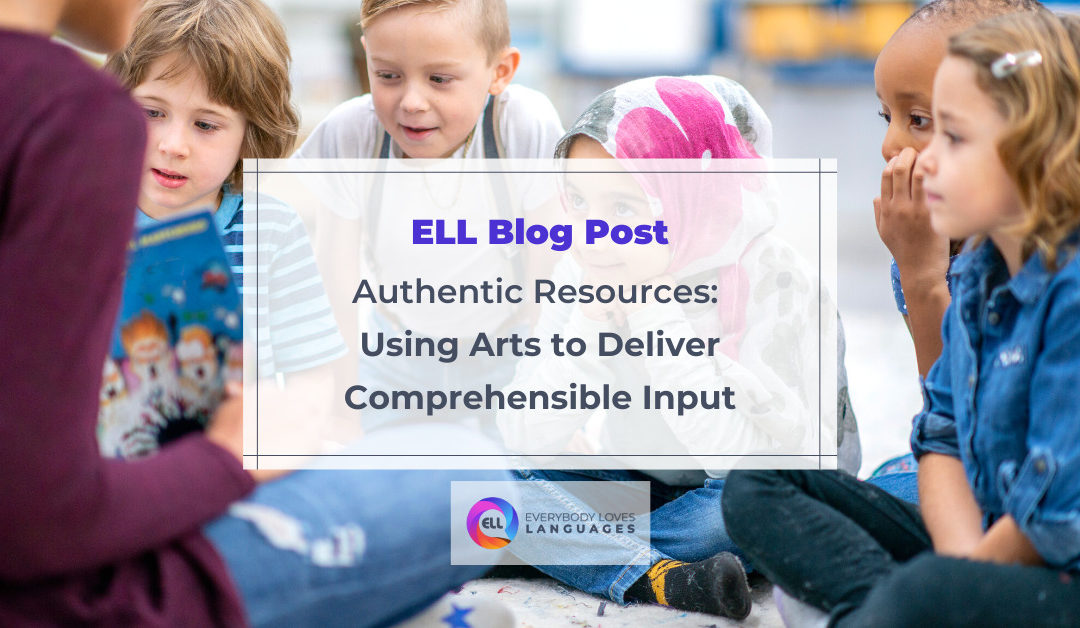Using Authentic Resources to Deliver Comprehensible Input in the Classroom
Eventually, every language student gets tired of conjugating verbs, rote memorization, and learning the same basic vocabulary words. How do we keep students engaged lesson after lesson? One technique to try is incorporating authentic resources into the classroom.
Authentic resources are resources made in a target language by a target language speaker for other people who speak that target language. If you’re teaching Spanish, for example, an authentic resource could be anything from the Spanish-language movie El Viaje de Carol to a McDonald’s commercial filmed for the Spanish-speaking market. Things like movies, plays, artwork, and books can all be considered authentic resources when they’re made for target-language speakers – and using these resources in your classroom makes learning easier for your students.
Comprehensible Input Helps Students Learn
We know that language acquisition happens through an unconscious process, a necessary ingredient of which is comprehensible input. To nurture learning in your classroom, you’ll want to deliver language input (i.e., examples of a target language) that can be understood by students even if they don’t understand all the words and structures in it. That’s where authentic resources come into play.
Through authentic resources, you can incorporate the 5 C’s – critical thinking, communication, collaboration, citizenship (global and local), and creativity. Students can gain access to real-world language patterns used by target-language speakers. They can also hear different accents and learn about the culture surrounding a language rather than just the language itself. These kinds of resources make students feel more engaged and interested in the language they’re learning. They’re also more easily able to find cognates in a language once they’re already interested in a topic, helping their learning progress faster.
How to Use Different Authentic Resources
While it takes a bit more work to find authentic resources, the internet makes this process fairly easy. You can use YouTube and Netflix to find movies and TV shows and a simple Google search to find artwork or plays. For lower-level or early learners, it might be worth seeking out children’s movies or starting with very short, basic video clips. Consider using the following types of resources:
- Theatre and Artwork – Theatre productions and art from target-language countries are an excellent tool for exploring historical practices, discussing cultural values, and practicing speech. Since plays have a script written by someone else, students are generally less nervous about reading aloud, and teachers can ask them to repeat sentences as needed under the guise of rehearsing. Artwork also lends itself well to examining culture and should be carefully chosen for maximum repetition of target structures in the classroom.
- Music Videos, Short Films, and Commercials – Shorter video resources like these are great for comparing and contrasting countries and cultures. Videos filmed in other countries will show students the cities and countryside, allowing teachers to incorporate vocabulary about landscape and geography. With commercials, teachers can examine cultural differences and compare cultural identities.
- Movies and TV Shows – Longer video resources like Movies and TV Shows can be used to explore listening comprehension and create themed vocabulary exercises. You can also try pre-reading or cloze activities, where words are removed from a passage for a learner to fill in as an exercise in reading comprehension.
- Print Advertising and Infographics – These types of resources help students gain culture-related information about the population in a given country. They can be used along with comprehension questions that ask students to locate information. For example, you can ask early learners to pick out dates and times, ask mid-level learners to research the advertising company, and so on.
- Websites and Social Media – Websites and posts on social media aren’t produced for language-learners – they’re created for real-life use by speakers of a language, so they’re authentic examples of something that exists in a different country. Search for websites created by foreign companies (e.g., a travel agency in Spain for Spanish learners, a U.S. basketball team website for English learners, etc.) to show students examples of authentic language use. You can also investigate popular hashtags (#) on Twitter and allow students to read the results from a search (e.g., #IdiomMonday for English learners, #CosasQueDiceMiMadre for Spanish learners, etc.).
Although it takes more creativity on your part, finding authentic resources is worthwhile. These resources will help you create compelling and comprehensible input in the classroom, and your students will be more engaged learners.
ELL Webinar Series
Would you like to watch a class about inspiring students? This blog post is a summary of the webinar held in August 2021 for ELL’s Professional Development Learning Series. Every month, we bring renowned instructors to present on a topic relevant to language teachers worldwide. You can watch the full recording here.
And, if you would like to join us for our next webinar, register here. Participants who join the webinar live receive a Certificate of Attendance!




Recent Comments